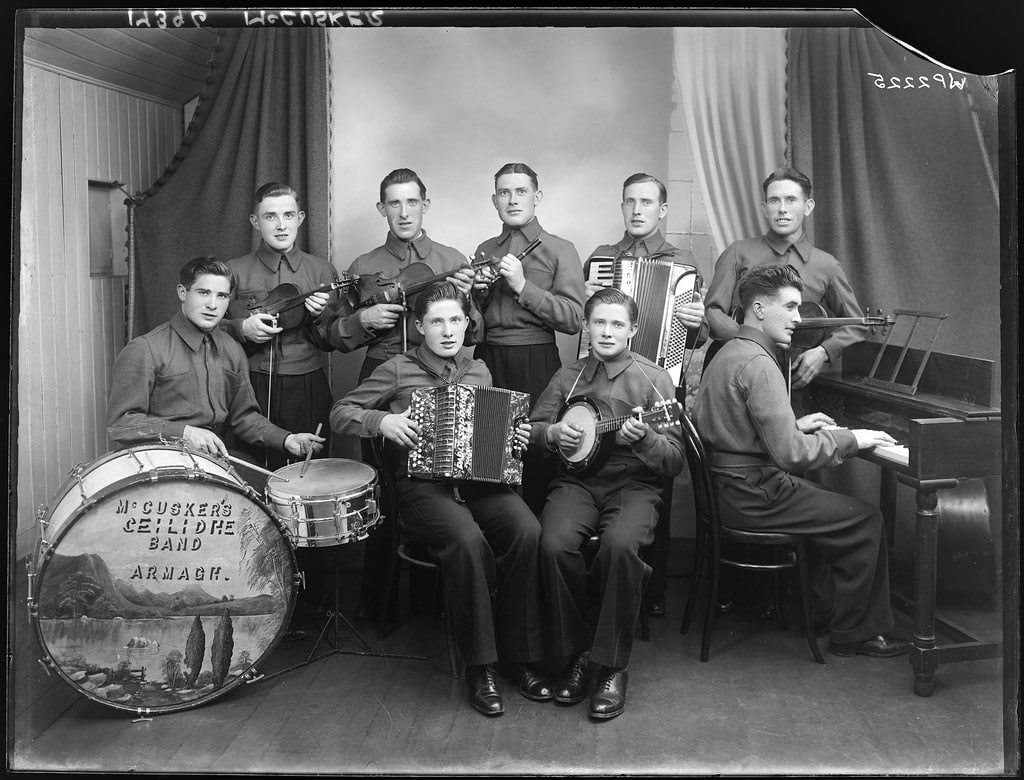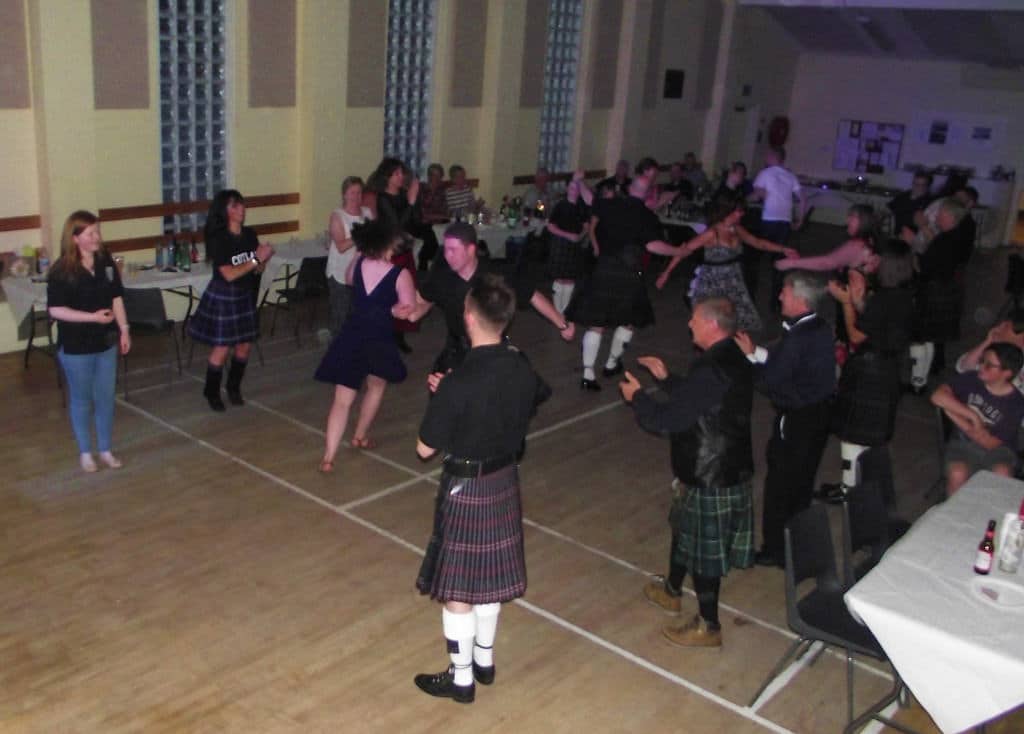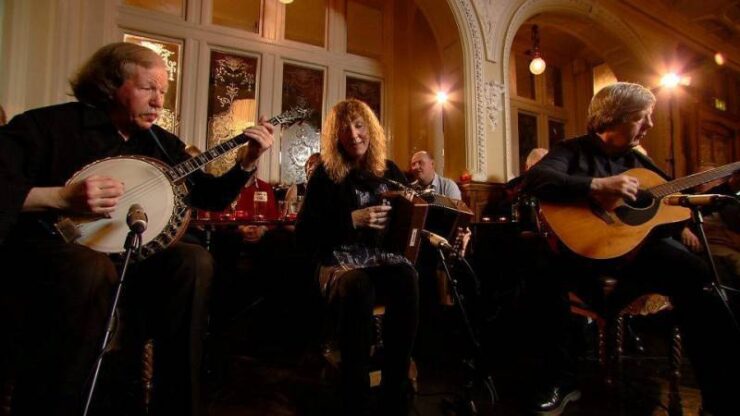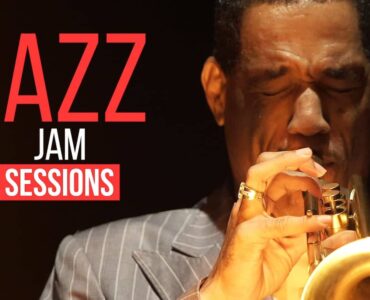With “Festival style” weddings proving more popular than ever last year, we take an in depth look in one of the most unique types of band on the Last Minute Musicians Directory – Ceilidh Bands.
What is a Ceilidh Band?
Ceilidh bands play very traditional Celtic music, usually trying to be faithful to the original style.
However, this doesn’t necessarily mean they are only from very specific parts of the country!
They perform a very interactive shows featuring ‘callers’ and a backing band. Audiences are expected to dance in formation usually to a varied selection of traditional Irish, Scottish, Welsh and English folk songs.
Many bands also keep in reserve other songs, that are more contemporary, in order to suit every audience… although you’re unlikely to hear Justin Beiber or Rhianna!

What type of events do they play at?
Traditionally Scottish ceilidh bands are a popular choice of entertainment at celebrations like St. Andrew’s Day, Burn’s Night or Hogmanay, not to mention standard birthday parties and weddings.
They may also play at themed nights or charity events. Ceilidh bands work really well as the perfect icebreaker for guests.
The dances are simple, the steps are easy to pick up and this makes them suitable for guests of all ages.
What type of instruments do they use?
Ceilidh groups come in various shapes and sizes, depending on which instruments the musicians play.
Fiddles, guitars, accordions and whistles are popular instruments among many backing bands but some choose keyboards, electric guitars, harmonicas, mandolins and varying choices of percussion, occasionally even choosing to include a full drum kit.
The role of a caller is to call out the dances; Circle, long-way sets, squares, waltzes… there are plenty to choose from and everyone usually gets to make a new partner through every dance
Thinking of starting your own Ceilidh band?
When thinking about starting a ceilidh band, it’s essential that the musicians have a good knowledge of traditional folk music.
Whilst Irish folk songs such as “Whisky in the Jar” are often the most well-known and best received, English, Scottish and Welsh folk songs, such as “Lusty Young Smith”, are also worth learning.
Many bands, such as popular Ceilidh band Wraggle Taggle are able to perform a varied repertoire of folk material spanning the past 7 decades.
From Irish classic “Dirty Old Town” to the Pogues Christmas hit “Fairy Tale of New York”, Wraggle Taggle pride themselves on being able to offer each client a performance of their choosing. For any function band, this is something to strive for.

In keeping with a folk ethos, start up ceilidh groups should also consider having a varied line up, preferably of multi instrumentalists.
Traditional folk instruments including the tin-whistle, banjo and flutes work fantastically and as multi instrumentalists, regardless of the line up chosen by the client, the live sound is constantly evolving.
Naturally, it wouldn’t be a ceilidh band without a caller to teach the audience a synchronised dance.
Popular ceilidh dances include:
- The Dashing White Sergeant
- Strip the Willow
- The Gay Gordons
- The St. Bernard’s Waltz
Dance moves and performance tips can be found at ScottishDance.net.
As a band, it is vital that the caller is clear in the dance instructions. It is generally recommended that the dances last around 32 bars, or at least until the band take pity on the dancers!
Fast, energetic and fun, a Ceilidh will ensure that all who take part will have a great time.
Sources
http://www.scottishdance.net/ceilidh/dances.html
If you’re looking to hire a current Ceilidh band, take a look at the listings on Last Minute Musicians. Likewise, if you’re a Ceilidh Band looking for more gigs register for a listing!




















